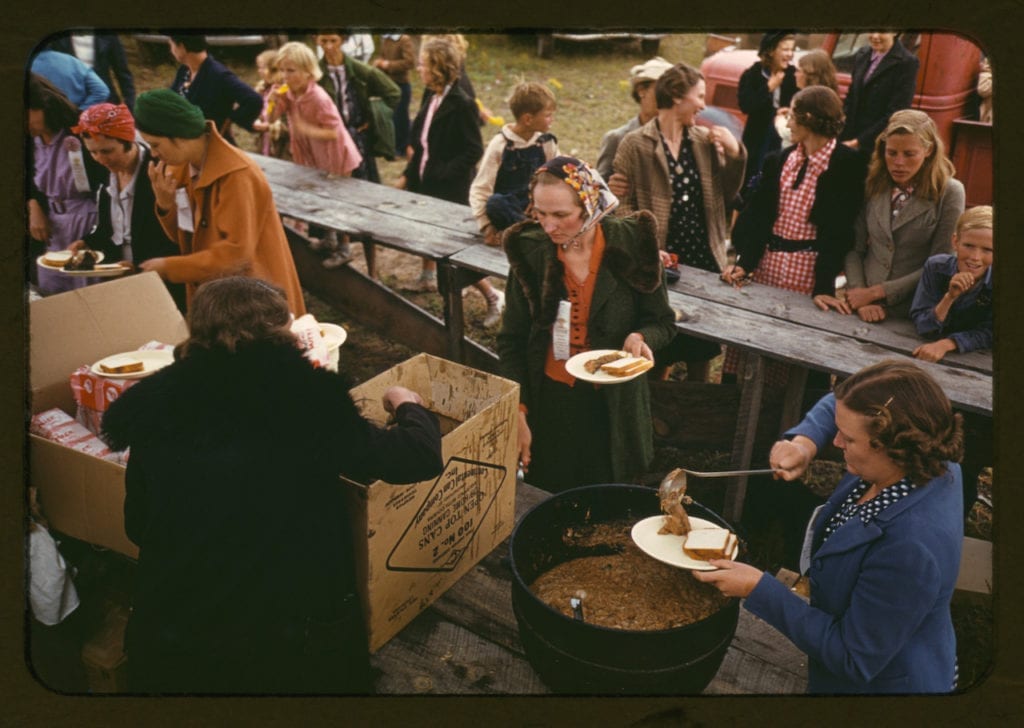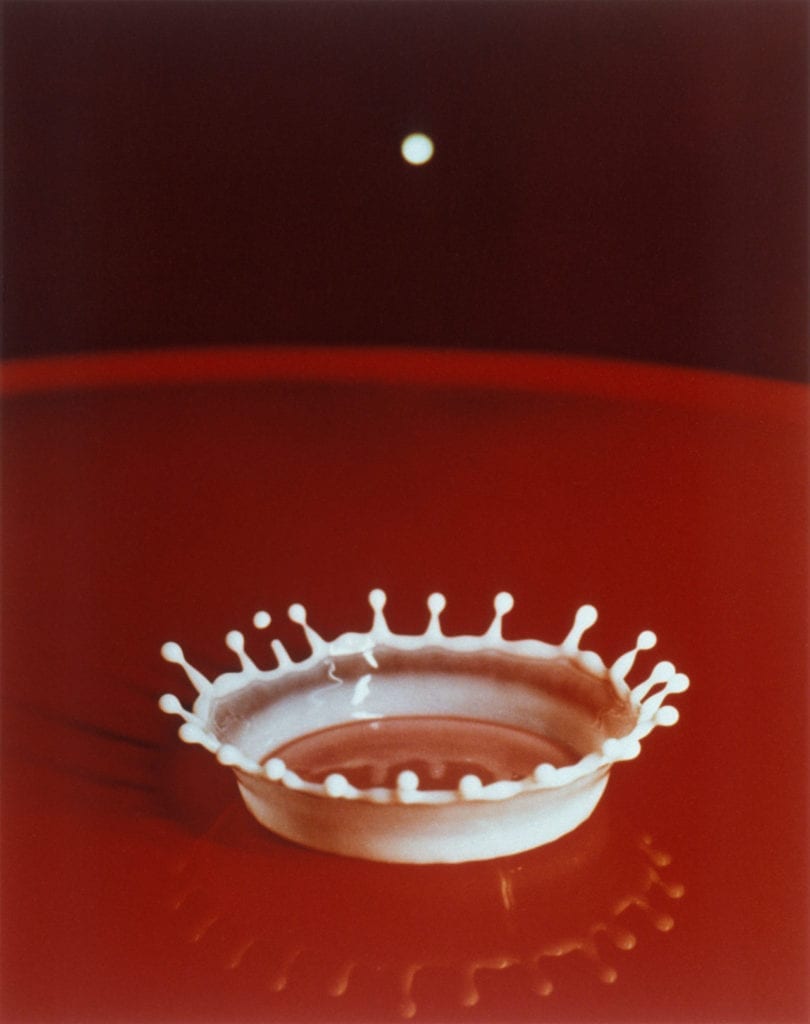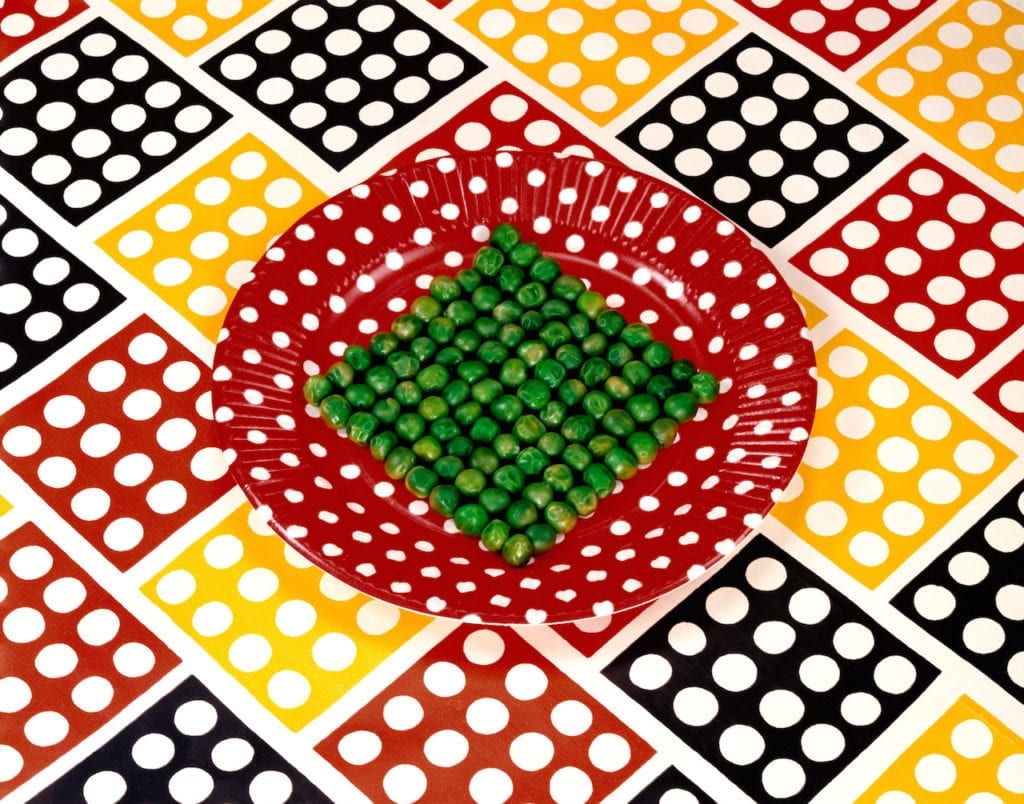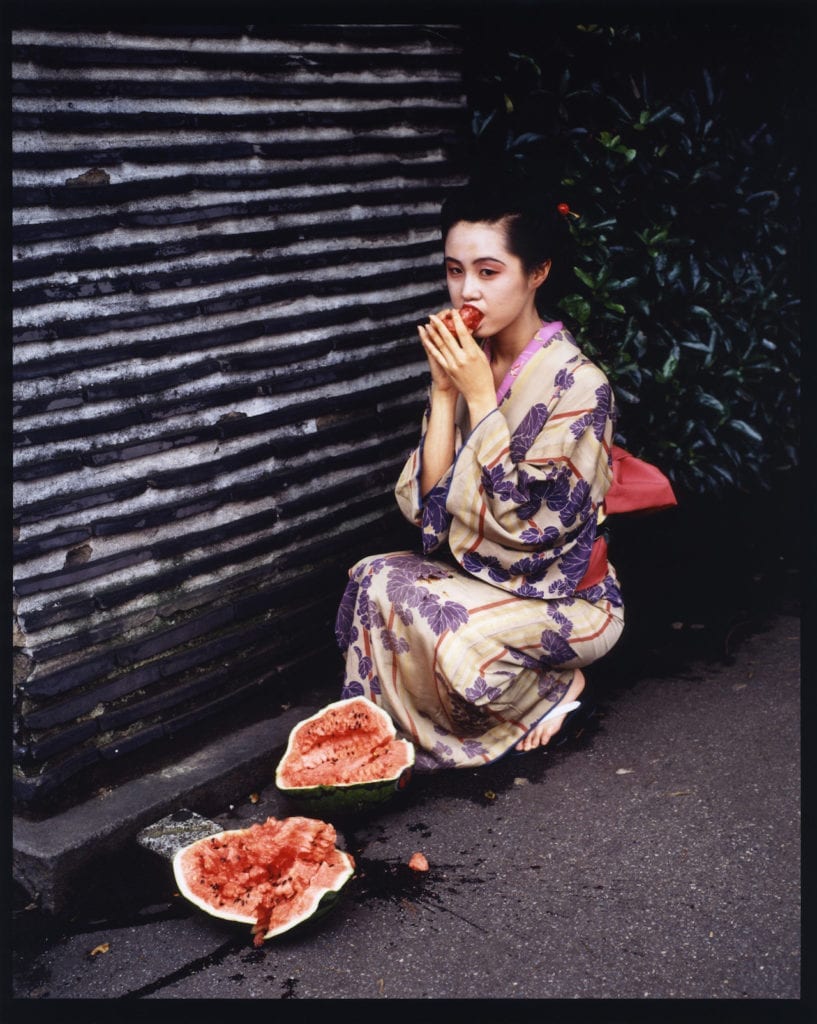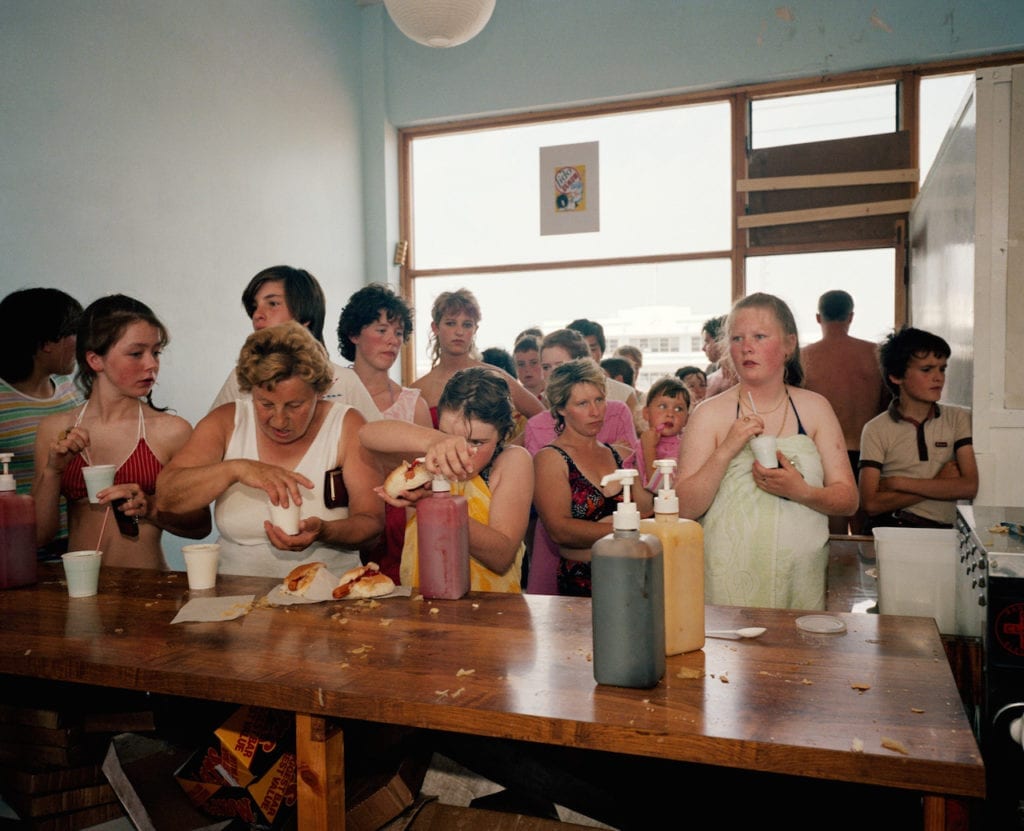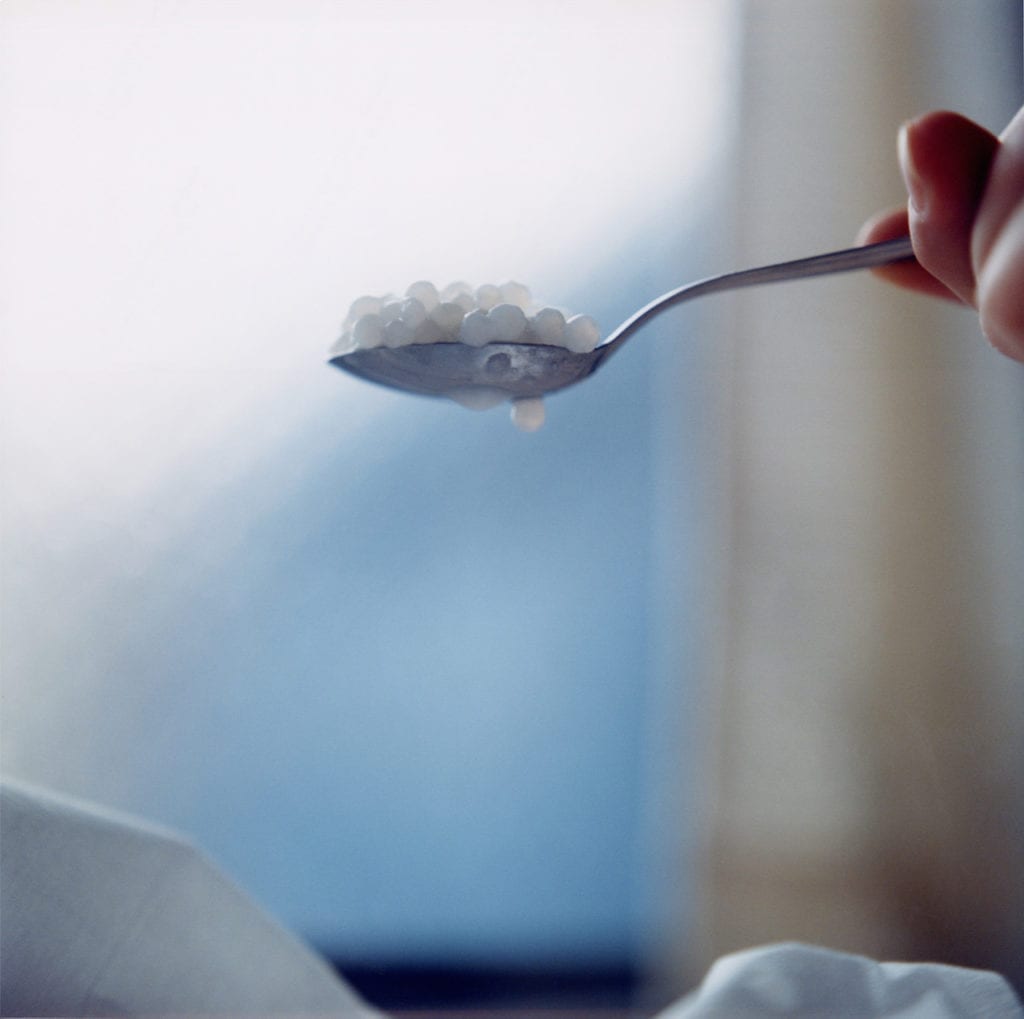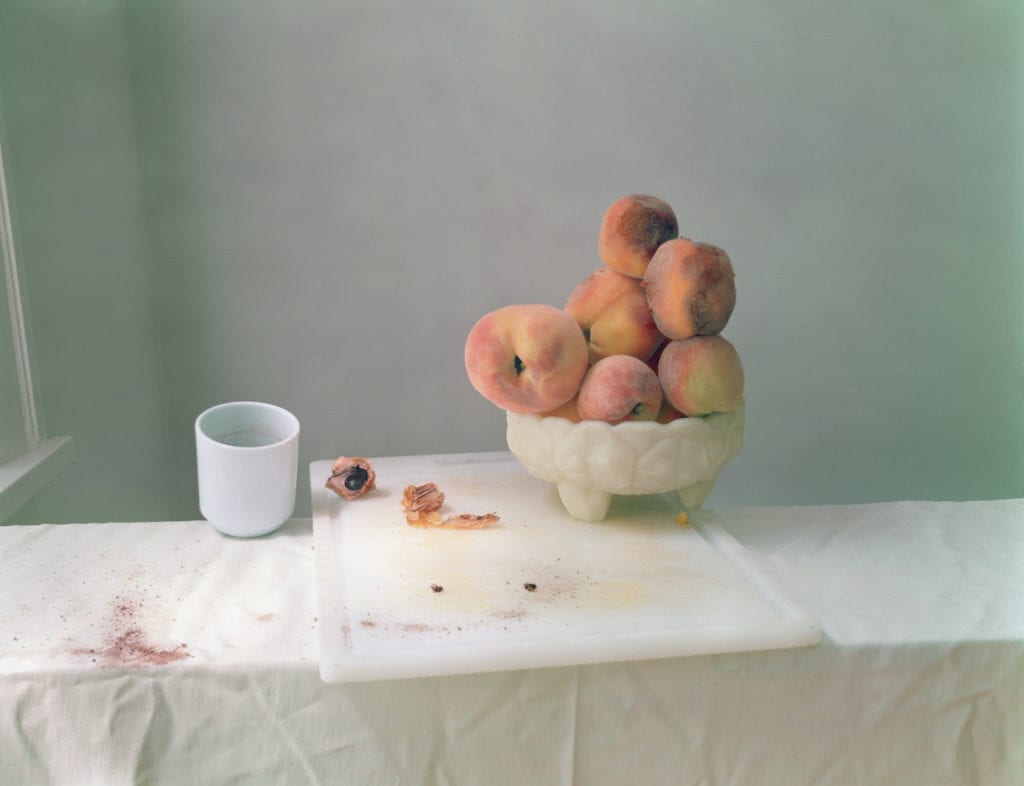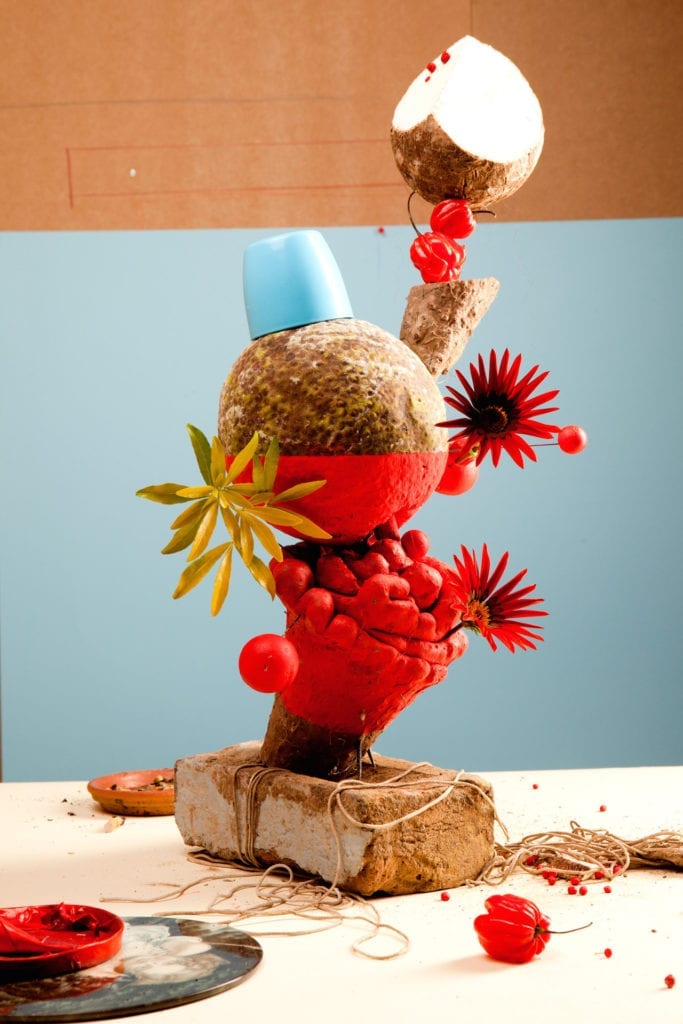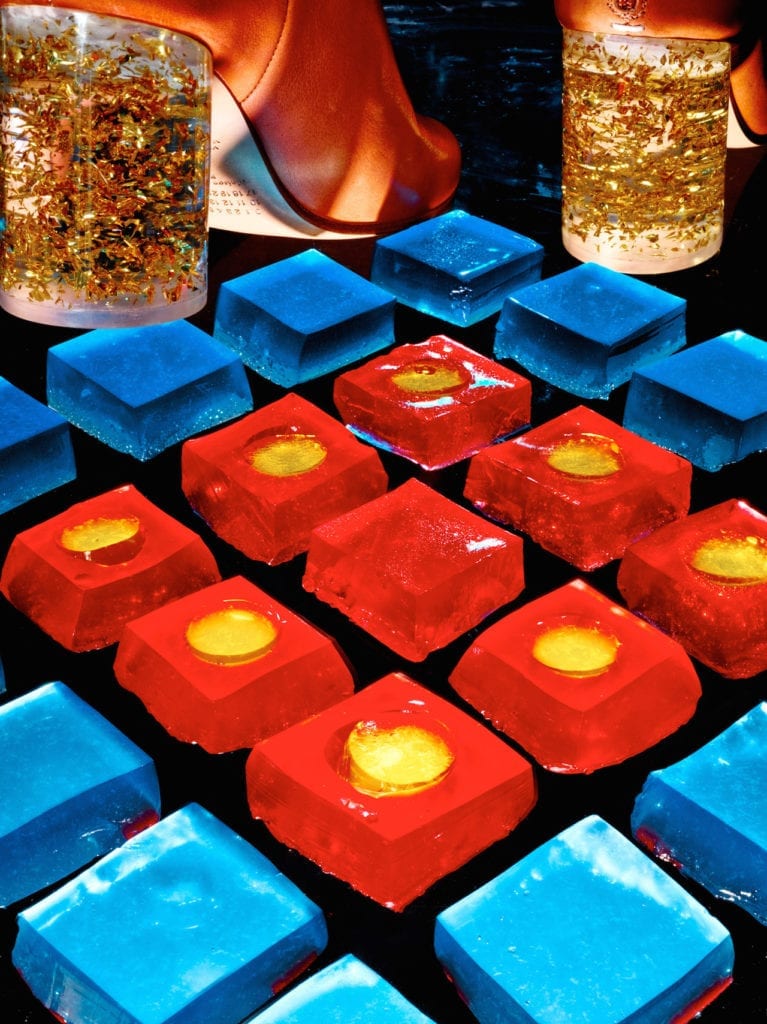When William Henry Fox Talbot pioneered the salted paper and calotype processes in 1841, he soon turned his new inventions to food, capturing two baskets overflowing with fruit. Creating an image designed to mimic the paintings of the time, and to contrast the colours and textures of the pineapple and peaches, he also made an image rife with welcoming symbolism – the pineapple a sign of hospitality, the peach a sign of fecundity.
“Fox Talbot’s photograph was copying the traditions of painting and its attendant symbolism,” says photography curator and writer Susan Bright. “But it was also concerned with the role of photography, and elevating its status to that of art. In this respect it resonates nicely with artists such as Daniel Gordon, whose work also deals with the medium of photography. But his constructed pineapple has nothing to do with symbolism, or striving to be understood as art. It is art. He is questioning the role of visual perception, what is real and what is not.
“The way food is photographed says a tremendous amount about significant aspects of our culture,” Bright continues. “It is often about fantasy, be that national, sexual or historical. Photographs of food are the carrier for so many things – desire, consumption, taste, immigration and feminism, for example. It has been a major part of the development of fine art, editorial, fashion, marketing and product photography throughout the 20th and 21st century.”
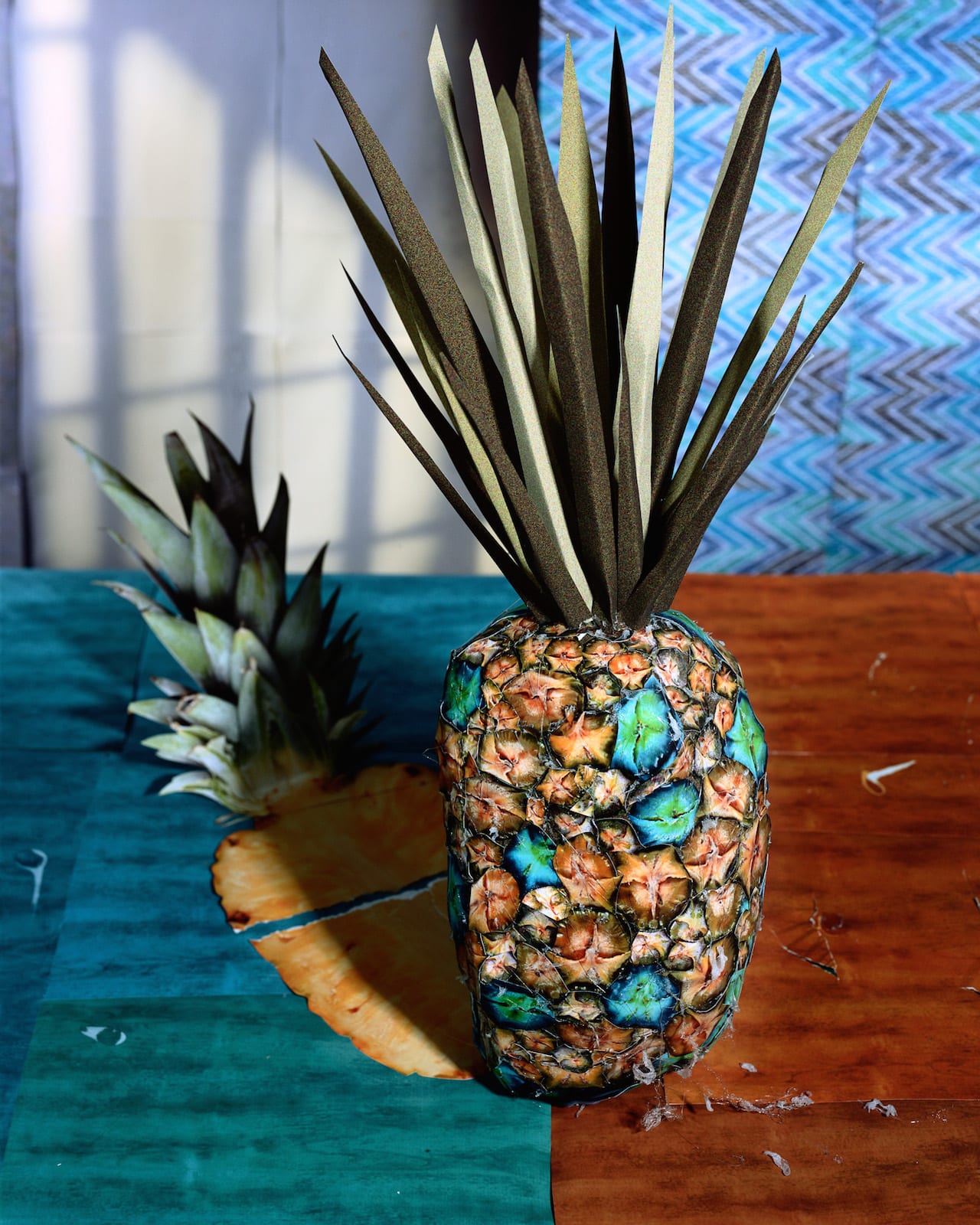
Bright explores the many elements of where and how we encounter photographs
of food in her new book, Feast For The Eyes – The Story of Food in Photography. Made
in collaboration with Aperture’s senior photography editor, Denise Wolff, it covers the many ways in which food has been imaged and imagined.
“Food photography is full of contradictions,” Bright says. “It says so much about our rituals and celebrations in society. It comments on the way we have welcomed and integrated other cultures into our own, how we invent tradition, what we aspire to be.”
“In art, food has long been a subject for investigation for feminists,” she adds. “For so long the preparation and cooking of food has been women’s work, and the domestic space is where gender ideologies are most insidiously played out. There are numerous examples of artists using photography to comment on this.
“Think of the performance Meat Joy by Carolee Schneemann, and Semiotics of Kitchen by Martha Rosler, and Jo Ann Callis’s work in the 1970s, Cindy Sherman in the ’80s, and Sarah Lucas in the ’90s, all of whom used food both for its sexual and sexist connotations.”
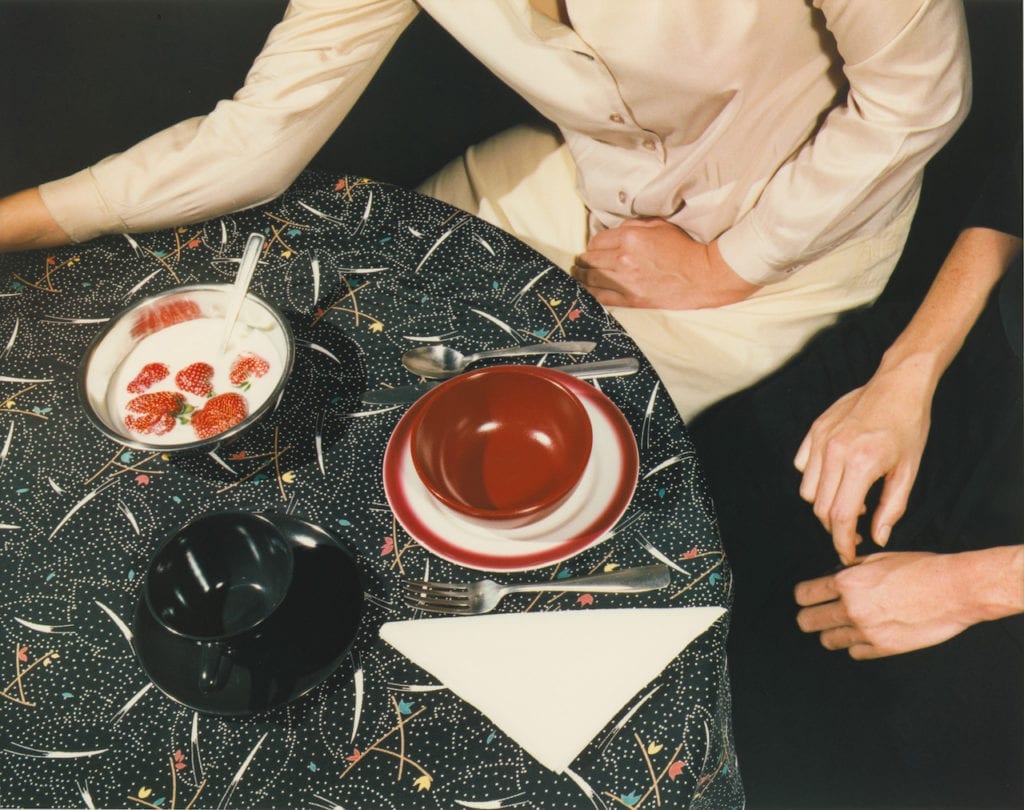
But what about advertising, marketing and product placement? Or projects that verge on this area, such as cookbooks – the medium one thinks of first when approaching food photography? For Bright they’re just as culturally loaded, and she illustrates her point by referencing the foreword of a Good Housekeeping cookbook from 1968. “It starts with the words: ‘Mention Good Housekeeping cookery books in any gathering of women and someone is bound to say, ‘Oh yes – all those lovely colour pictures of food’,” she says. “In fact, the colour pictures in the book are scarce – only 64 as the cover proudly states.”
It’s the apparently passing reference to the ‘gathering of women’ which carries the most weight, she continues, though its coded and subtextual. “In the post-war era, after the food rationing at the end of the Second World War, and during the New Deal in America, we saw the rise of domestic cook and advice books that promised new ways to cook and serve food, to have neater homes and better lives,” she says.
“This food photography was aspirational. Those cookery books would promote recipes with ingredients that were hard to get hold of. It was a way, in my opinion, to get women to create a job out of the home, complete with the latest technology and appliances. Not long before, those same women were in factories making bombs and guns, now there was a real push to get them back in their homes, back in the kitchen, making dinner for their husbands.”
And little has changed, she believes, though it’s less immediately apparent. “Many cookbooks are still mainly marketed at women, though not as blatantly as they were,” she points out. “Look at Jamie’s 15-Minute Meals. Before you get to the recipes, there is a spread of photographs of Jamie Oliver’s family. The subtext is that his wife is holding it together in the home – the busy mum able to put nutritious meals in front of her family every day, as directed by the man of the house. It’s subtle but it’s there.”
And, she concludes, if cookbooks still trade in stereotypes and assumptions, so too do new media platforms such as Instagram. Meanwhile, artists continue to challenge and undermine some of the very same notions. “The subject of food can cross over all these practices,” says Bright. “Art and advertising, satire and earnestness, and so on.”
A Feast for the Eyes is on show at FOAM, Amsterdam from 21 December – 03 March 2019 www.foam.org/museum/programme/feast-for-the-eyes A Feast for the Eyes is published by Aperture in June, priced $60. aperture.org
This interview was originally published in the December 2016 issue of BJP, which had a special focus on food photography.
